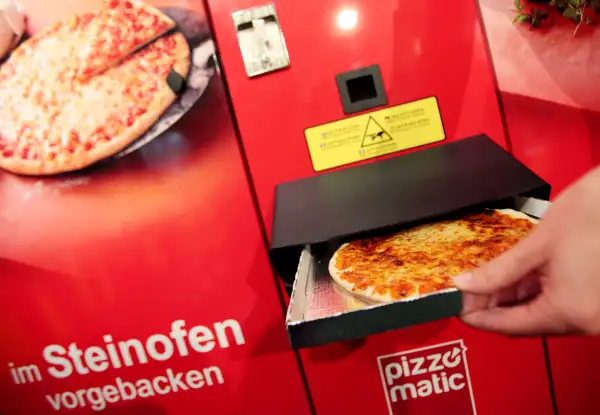Pizza, Burrito, and Sushi Vending Machines Are the New Fast Food Trend

The Automat, a restaurant that used a vending machine-like apparatus to dispense food, had it's heydey more than 80 years ago. First launched in 1902 in Philadelphia, Automats numbered more than 30 in New York City alone at one point. Then the fast food craze hit America and prevented a rise of the machines.
But if we've learned one thing from James Cameron and Arnold Schwarzenegger, the machines will rise again. That Automat of the past may be the fast food of the future.
Amidst the rise of "foodie" and "slowfood" culture on one side, the other end of the spectrum is pushing against current norms as well, and according to Bloomberg, the result may look a lot like that traditional Automat.
Automation is coming whether we want it to come or not,” Andy Puzder, CEO of CKE Restaurants, which owns the Hardee’s and Carl’s Jr. fast-food chains told Bloomberg. “It’s everywhere. It’s in everything.” As Fortune put it when it wrote about Puzder earlier this year, a primary motivation is that "robots don't sue." -- unlike minimum wage workers. He also told Business Insider that "Millennials don't like seeing people." App to person preferences aside, machines also fit into the fast food minimum wage conversation by providing a way out of the "Fight for $15" debate.
Puzder's vision for restaurants that look like vending machines is joined by actual vending machines. A pizza vending machine called "24/7 Pizza Box" is coming to Florida later this year, according to Bloomberg, and already sushi is sold by "Sushi Station" (with rolls made by robots) and burritos by "Burritobox"—which enjoyed a viral moment a few years ago. All of this should boost the vending machine business that draws about $8 billion dollars annually.